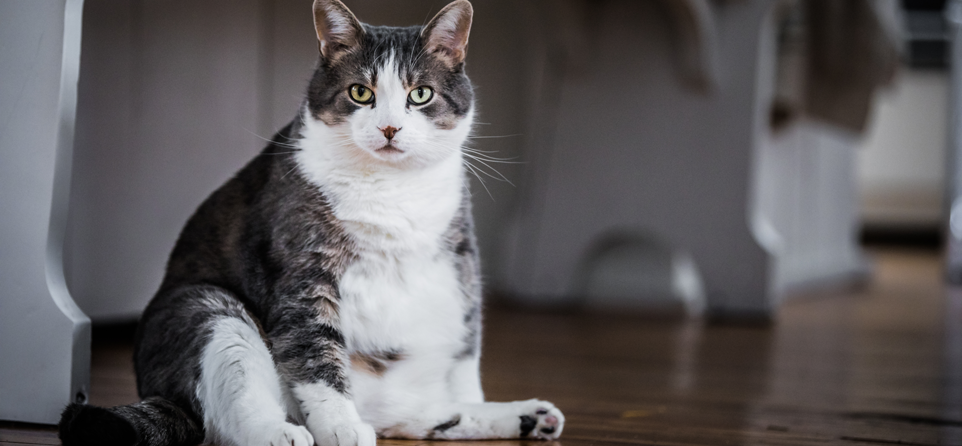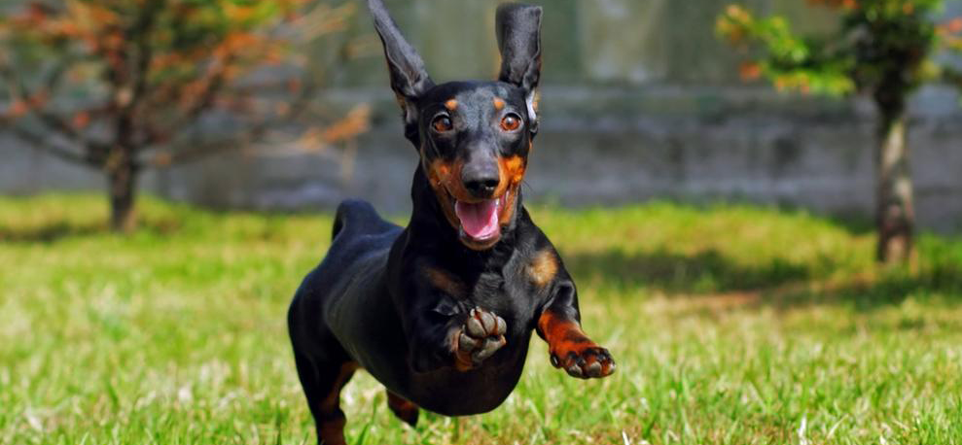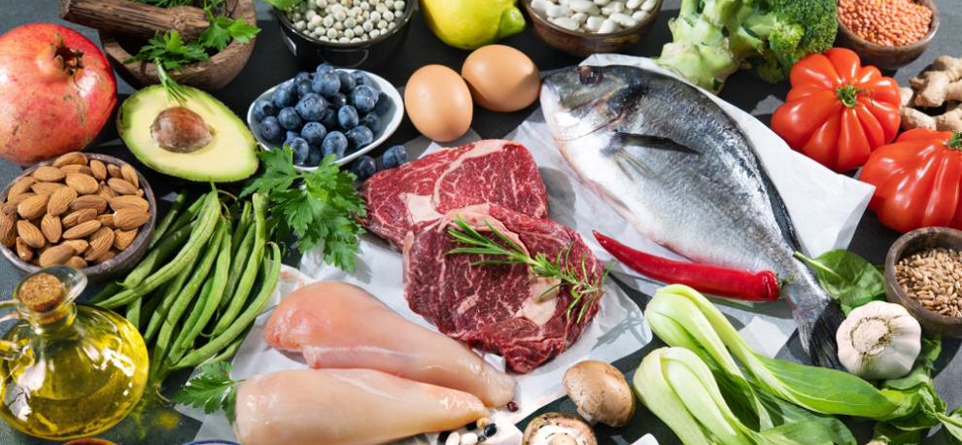Obesity: Is Your Pet Fluffy or Fat?
- Red Dog Blue Kat
- Jul 23, 2019
- 6 min read
Updated: Apr 28, 2021
Just like human North Americans, pets are being plagued with obesity. The Banfield State of Pet Health Report shows that in the last ten years, obesity in cats has risen by 169% and in dogs by 158% (1). The report credits the following for this rise in pet obesity:
Overfeeding
Lack of Exercise
Underlying Disease
Breed and Genetics
What’s perplexing is that there is no mention in this report of the type of diet being fed as cause for potential concern. It’s like there’s a giant rainbow-colored elephant in the living room that everyone can see but no one talks about... While the above factors certainly contribute to obesity, we believe there is absolutely a dietary component as well. Just as it is true for us, the TYPE of food your pet eats will affect his/her weight and overall health. It is super important to read the labels on your pet’s food! With frighteningly high numbers of pets dealing with obesity, it’s important to take a close look at the potential dangers of obesity and some of the possible solutions to it.
Dangers of Obesity
Obesity causes a plethora of health problems including joint disease, diabetes, heart disease, and much more. If your pet is fat, you need to take it seriously. It could result in unnecessary vet visits and heartbreak. It’s important to pay attention to your pet’s weight and adjust their food as needed to return them from obesity to a healthy weight.
Joint disease
Can be related to genetics but it can also appear as a result of diet and obesity. Too much extra weight can cause wear and tear on the joints which may lead to arthritis. Obesity can also lead to developmental deformities in young animals, such as hip and elbow dysplasia. However, even if you have a breed of dog or cat that is genetically susceptible to orthopedic issues it doesn’t mean they will automatically develop joint disease. There are things you can do to help avoid this possibility, including a healthy diet and a safe exercise program.
Diabetes
A disease that is often directly related to and progresses from obesity and poor blood sugar regulation. Sometimes diabetes is even intertwined with pancreatic disease.
Fibre, fat, and protein are all blood sugar regulators. Processed starch of almost any kind is NOT! A high starch diet will inevitably cause a pattern of spiking and then plummeting blood sugar which, if unchecked, can lead to diabetes. Obesity and blood sugar regulation are both easily managed with a variety of fresh foods, including lots of protein, a moderate amount of fat, very little starch, and lots fresh vegetables for vitamins, minerals, and fibre.
Heart disease
Another natural outcome of obesity and is also closely linked to diabetes. The Journal of Veterinary Internal Medicine article on Cardiac and Metabolic Variables in Obese Dogs (2) they found that obese animals are at greater risk for cardiac disease along with diabetes and inflammatory disease.
Obesity causes the heart to work exponentially harder than it would normally have to work for a dog or cat at a normal weight. So, carrying extra weight puts a big strain on the whole cardiovascular system and, as stated above, diabetes can also lead to heart damage, and it becomes a vicious cycle all-around.
While heart disease can be partially genetic, there are definite dietary factors involved as well. The latest warnings from the FDA regarding dilated cardiomyopathy and diet are a perfect example. What you put into your pet will directly affect their long-term health…just like it does for us. To learn more about the dilated cardiomyopathy issue, click here.
So you don’t want to be laughing about how chunky your pet has become or ignoring it as an unimportant matter. It is a serious concern that needs to be addressed as soon as possible.
Diets for Obesity 101 – Macro Nutrients Matter
The simplest way to think about how to get your pet on track with his or her ideal weight is to begin understanding macronutrients and how they are processed by the body. The macronutrients proteins, fats, and carbohydrates are the three primary energy sources pets receive from food. Let’s take a look at each one and see how they provide energy for the body.
Proteins
Protein is a macronutrient that is composed of amino acids which are the building blocks of life. There are 20 amino acids—10 of which are essential for dogs and 11 of which are essential for cats. Essential means they must get them from their diet. Protein provides 4 kilocalories (kcal) per gram. Kilocalories relate to how much “energy” the food provides per gram which is important to understand when you’re creating a meal plan that meets your pets’ daily energy requirements.
Protein is also a blood sugar regulator which means it helps keep blood sugar stable and provides protection from glucose highs and lows. This is paramount for preventing diabetes. In a raw diet, dogs will need 10-15% protein (as fed) and cats will need 15-20% protein (as fed).
Protein is also an important element that helps your pet lose weight. If you’re switching from a starch-based diet to a fresh-food diet, you’ll notice a difference in your pet’s fat to muscle ratio once the body is taking in less sugar and more minimally processed protein. Increased muscle will mean a more healthy metabolism and stable blood sugar.
Fats
Given the recent decades of marketing, you might think that fat is the main culprit when it comes to obesity, right? Well, it’s not always the case. Fat is an important part of any diet. Some people over-feed fat and others don’t provide enough fat in their pet’s diet. However, there are different types of fats that need to be balanced in order for your pet to thrive and get everything they need—saturated fats, medium-chain fats, and polyunsaturated fats.
Fats contains 9 kcals per gram so it’s action-packed when it comes to providing energy for the body. Fat is also a fantastic blood-glucose modulator and is an important part of diabetes prevention and management.
If your pet is overweight, you absolutely need to provide them with balanced, healthy fat but you may need to modify the amount, depending on what you’re going to be feeding. If your pet has been eating a starch-based diet and you’re switching to a whole food diet, your fat content will stay relatively the same, the protein level will increase appropriately, and the starch content will drastically drop. These are all good things that will naturally encourage weight loss.
Carbohydrates
(insert your favourite scary music here) Carbs! They also seem to be perceived as bad these days. However, that assumption is not entirely true. The type of carbohydrates you’re providing to your pet are very important. The more processed a carbohydrate source becomes, the starchier it is. The starch is then easily turned into sugar instead of remaining partially digested and working as roughage in the digestive tract. This causes blood sugar to rise and then crash, leaving your pet feeling hungry and seeking out multiple, ongoing feedings rather than feeling sustained on a few meals per day. As mentioned earlier, this rising and falling of blood sugar can lead to diabetes. Keep this firmly in mind when you’re choosing carbohydrate sources for your pet.
Basic Guideline for Carbohydrates:
Use ground vegetables as your main source of fibre and cut out the processed starchy foods such as processed wheat, corn, grain meals, legumes, legume meals/powders, corn starch, wheat starch, wheat/corn gluten, and other highly processed carbs.
The best carbohydrates come from fresh veggies and include: a) organic greens such as lettuce, bok choy, chard, kale, dandelion greens, and beet tops b) Roots such as beets and yams c) Squashes and pumpkin
If you’re going to use a carbohydrate source, use cooked organic oatmeal, organic ground flax, or well-cooked quinoa, all of which provide healthy sources of fibre/prebiotics, carbs, and some protein too.
Diabetes in Dogs Vs. Cats
Animals develop diabetes for different reasons. It can be due to prolonged, unchecked obesity, an underlying health condition, diet, or a combination of all three. Dogs and cats differ in the type of diabetes they typically develop and it’s important to know the differences so you can choose the best diet for your pet.
Learn more about the differences between dog and cat diabetes and managing diabetes with fresh food in our article Management of Diabetes with a Whole Food Diet
Exercise
One of the many reasons to have a pet is to interact with them! For dogs and cats, running and moving is a big part of their lives and plays a major role in weight management. Too many of us are leading sedentary lives—our pets suffer for this and so do we. Let your pet be a source of inspiration for being out in nature and getting fresh air and exercise. It is important for the whole family. For ideas on how to make exercise fun for you and your pet, click here.
A quick word of caution: over-exercising can lead to its own set of negative issues in young and severely obese animals. So, be sure you are not overdoing it for these types of animals.
If you’re having problems with getting your pet to lose weight, you might want to visit your veterinarian to see if there’s anything going on health-wise that might be hindering your pet’s weight loss program (hypothyroidism is quite common!)
You are also invited to fill out our Online Complete Feeding Guide Request Form for helpful dietary suggestions or get a Customized Diet Plan from our Pet Nutrition Specialist.
We hope this inspires you to get excited about healthy eating and exercise for the whole family!






ความคิดเห็น